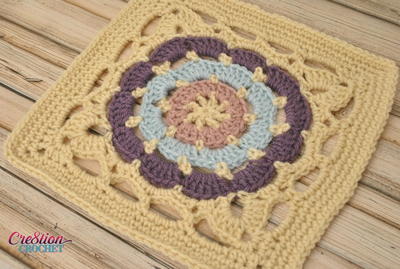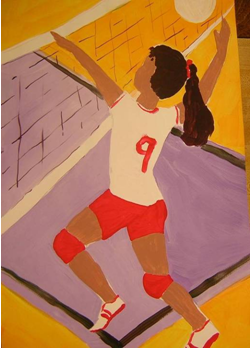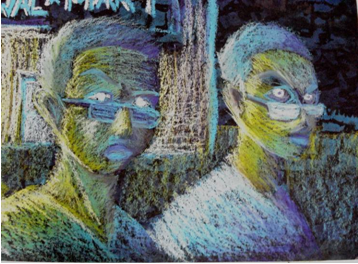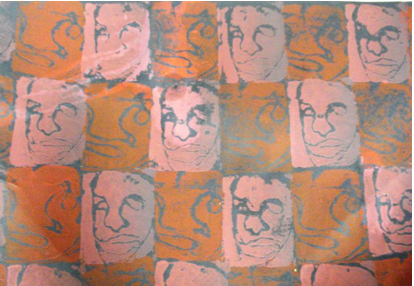Prehistoric Art
Students will learn about art as a cultural and historical record with this lesson from Sargent Art. Students will explore the culture of early time, Prehistoric, meaning art dating back to the time before people kept written records, to see that the need to create has always been a driving human force.
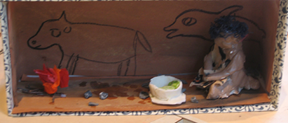
Target Grade: 3
Goal (Terminal Objective): Students will understand that artworks record a way of life and define a culture. Students will define Prehistoric art as art dating back to the time before people kept written records. They will understand that the earliest art works date back to the Old Stone Age (30,000 until about 10,000 BC).
Objective: Students will define culture. Students will be introduced to examples of pre-historic painting and relief sculpture. Students will become aware of the materials, techniques and subject matter in the art of the early cave dwellers. Students will describe life in ancient times and tell what kinds of art were created in early times. Students will list various “earth colors”. Students will create a cave painting and a relief sculpture in the form of a diorama.
National Standards:
Visual Arts Grades K-4 Content Standard 1: Understanding and applying media, techniques, and processes
Visual Arts Grades K-4 Content Standard 3: Choosing and evaluating a range of subject matter, symbols, and ideas
Visual Arts Grades K-4 Content Standard 5: Reflecting upon and assessing the characteristics and merits of their work and the work of others. Social Studies Cross Curriculum Connection
Purpose: Students will become aware of the historical impact of discoveries in the caves of Altamira, Spain and Lascaux, France. These paintings are remarkable similar to prehistoric paintings form many other parts of the world. Students will understand the various purposes cave paintings were created such as to bring good luck in hunting, increasing animal population, or to celebrate various rituals. The paintings were large, covered walls and ceilings, and were created and seen by torchlight. Cave dwellers probably used soot and colored clay or other natural pigments mixed with animal oils for a paint medium. Brushes may be been made from animal hairs or sticks.
New Vocabulary: culture, outline, earth colors, Stone Age, Prehistoric, pigments, artifact, Archaeologist, Anthropologist, Paleontologist
Materials:
- Sargent Artist’s Oil Pastels
- Sargent Sculpt it
- Sargent White Glue
- Square Chalk
- Acrylic Paints
- Shoe box
- celluclay or paper mache
- sand
- brown construction paper
- sticks
- stones
- shells
- small fake fur pieces or animal printed fabric pieces
- black yarn
Time: This lesson may be modified from one to five hours, depending upon the size and complexity of expectations.
Introduction and Motivation (Set):
View the work of Prehistoric artists. View photos of Altimira and Lascaux. Ask students to describe their image of ancient life. Discuss the similarities and differences in the life of a cave child to their lives in present day. Discuss how archaeologists used artifacts to gain information about early civilizations which made not written records. Discuss how the art of a culture provides important information about the daily life of past civilizations.
Instruction:
Teacher demonstrates outline sketches used in the creation of cave animals for the cave painting. Describe the shapes as flat, with movement implied. Discuss how the artists created the movement and rhythm with line and shape. Discuss the unification of the composition. Point out the importance of color selection to mimic those natural dyes and pigments used by cave dwellers.
Activities:
(1) Guided Practice:
1. Students will make several sketches influenced by the prehistoric exemplars shown in the motivational segment of this lesson.
2. Student sketches should contain animals indigenous to the prehistoric era and include motion or movement in their rendering.
3. Students cut brown construction paper to fit the inside of their shoebox (back and sides).
4. Students will rub various shades of yellow ochre, deep red, tan and brown chalk, using the side of the chalk and blending with a wad of soft tissue. Some chalk will come off, which will add to the depth of the simulated cave wall.
5. Students will use outlining with black oil pastel to render their prehistoric animals onto their cave wall directly over the blended chalk.
6. Students carefully apply Sargent white glue to the interior back and sides of the shoe box.
7. Students press in their cave wall oil pastel and chalk “cave painting” onto the interior back and sides of the shoe box.
8. Students paint Sargent white glue onto the floor or base of the shoe box and cover the glue with sand.
9. Students use small twigs and/or stones to create a fire pit. Torn scraps of red and orange tissue glued standing up will replicate fire.
10. Using small bits of Sargent Sculpt It, students will create small bones to glue to the floor of the cave diorama.
11. Students will create a cave person out of Sargent Sculpt It.
12. Paint cave figure with Sargent acrylic paint in a dark flesh tone and dress with scraps of fur or animal-printed fabric scraps.
(Students may use celluclay to cover the outside of the shoe box to replicate a stone cave.)
(2) Independent Practice and Check for Understanding: Teacher circulates among working students visually recording students demonstrating understanding of objectives and provides reinforcement.
(3) Closure: Students record details and relate those details to Prehistoric history. Students will include innovations they provided to the piece in their sketchbook.
Evaluation:
Level One -- The finished Prehistoric diorama successfully conveys an image of prehistoric life and strictly adheres to the lesson objectives. There is a successful use of color to replicate the natural pigments used by cave artists. There is a successful use of stylization in the outlining of the cave animals. There is a successful sculpting of the cave person. There are at least five details added to the cave floor and/or environment.
The student artists is able to articulate various additions to his or her cave diorama and explain the rational why he or she chose such detailed additions to their artwork. The student is able to identify different earth tones used in their completed diorama.
Excellent craftsmanship is observed in the completed diorama.
Level Two -- The finished Prehistoric diorama conveys an image of prehistoric life and adheres to several of the lesson objectives. There is a good use of color to replicate the natural pigments used by cave artists. There is a good use of stylization in the outlining of the cave animals. There is good sculpting of the cave person. There are at least four details added to the cave floor and/or environment. The student is able to describe various details in his or her cave diorama. Good craftsmanship is observed in the completed diorama.
Level Three --The finished Prehistoric diorama conveys an image of prehistoric life and adheres to at least two of the lesson objectives. There is some evidence of use of color to replicate the natural pigments used by cave artists. There is some evidence of stylization in the outlining of the cave animals. There is moderate sculpting of the cave person. There are at least two details added to the cave floor and/or environment. Some effort at craftsmanship is observed in the completed diorama.
Level Four -- The finished Prehistoric diorama somewhat conveys an image of prehistoric life and adheres to at least one of the lesson objectives. There is no use of color to replicate the natural pigments used by cave artists. There is no use of stylization in the outlining of the cave animals. There are poor sculpting techniques of the cave person. There are no details added to the cave floor and/or environment.
Poor craftsmanship is observed in the completed diorama.
Extension: Students might speculate on how archaeologists date cave paintings and other artifacts. Students may research online carbon-14 dating and other tools archaeologists use to investigate Prehistoric life. Students may write a short paragraph that describes a day in the life of their cave person.
Read NextPainting Pictures in Motion





